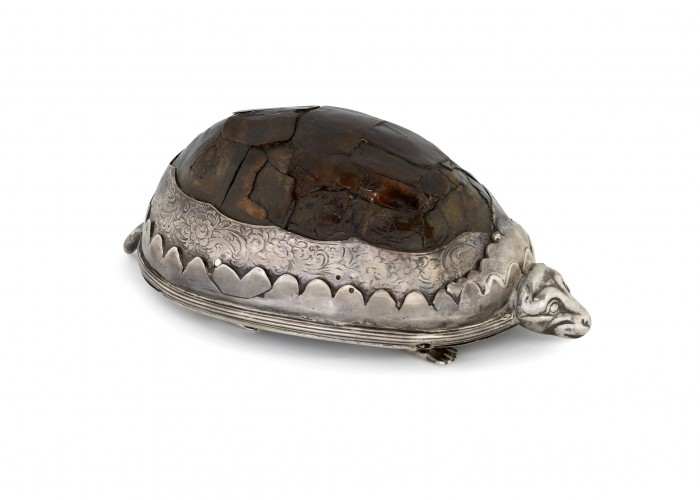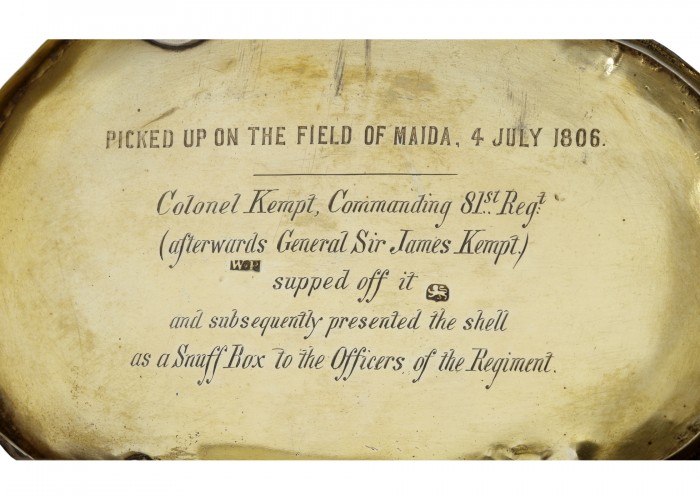The Maida Tortoise
This tortoise-shell set in silver is a memento of the Battle of Maida, fought in Italy in 1806. The tortoise was eaten by a British officer at Maida. Maida was one of the many battles fought around the world between the British Army and the French from 1793 – 1815. These struggles began with the French Revolutionary Wars, continued against the French Emperor led by Napoleon, and finally ended in the Battle of Waterloo.
In 1806, the French under their Emperor Napoleon invaded the Kingdom of Naples, in southern Italy. Britain, an inveterate enemy of France, was allied with the King of Naples, Ferdinand I, who had fled to nearby Sicily. A British Army expeditionary force of 5236 soldiers landed in Naples to harass the invaders, and faced the slightly larger French force at Maida, in the “toe” of southern Italy.
This was typical of British strategy during the Napoleonic Wars. Unable to defeat larger French armies on equal terms, they supported many other countries in grand alliances against Napoleon. The Royal Navy would land small groups of British troops to attack the French and their allies wherever they were most vulnerable, in the far-flung outposts of the French Empire.
The Battle of Maida was a significant victory for the British, who crushed the French army and took over 700 prisoners. However, the supply situation for an army marching through enemy-held territory, supplied by ship, was very difficult. Many British regiments had no rations available, including the 81st (Loyal Lincoln Volunteers) Regiment, commanded by Colonel James Kempt.
Instead, Colonel Kempt’s servant caught and cooked a small tortoise for his commanding officer’s dinner. Tortoises are native to southern Italy, and were once eaten by Calabrian peasants as a cheap wild meat. Many years later, the by-then Lt. General Sir James Kempt presented the tortoise shell, mounted in silver as a snuff box, to the Officers of the 81st as a gift.
Both battalions of the 81st Regiment just missed fighting in the Battle of Waterloo in 1815. The 1st Battalion was en route back from Canada, and arrived two weeks after the battle on 18 June 1815. The 2nd Battalion was just miles north of Waterloo, in Brussels, on 18 June. However, they were held back as part of the reserve, and to guard the Allied Army’s baggage and pay-chests. Many soldiers were bitterly disappointed to miss this final, climactic battle against the French.
-
Curatorial info
- Originating Museum: Lancashire Infantry Museum
- Production Date: c. 1827
- Material: Silver, tortoise-shell
-
Use this image
You can download and use the high resolution image for use in a non-profit environment such as a school or college, but please take note of the license type and rights holder information below
- Rights Holder: Copyright Lancashire Infantry Museum.
- License Type: Creative Commons
Find it here
This object is in the collection of Lancashire Infantry Museum









